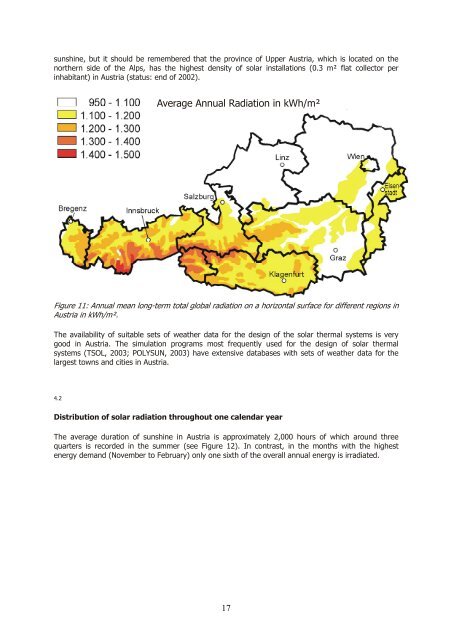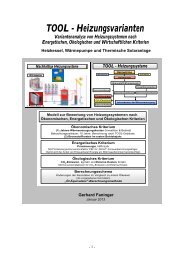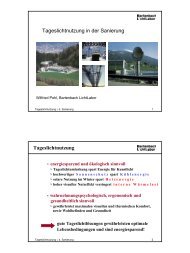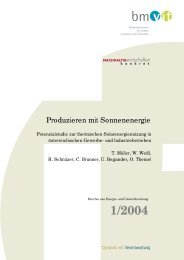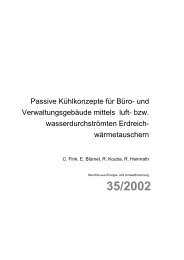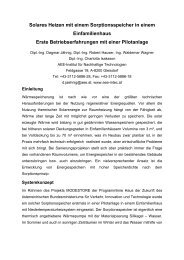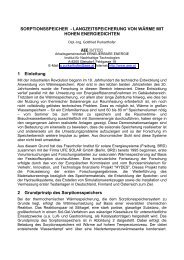Solar-supported heating networks in multi-storey residential buildings
Solar-supported heating networks in multi-storey residential buildings
Solar-supported heating networks in multi-storey residential buildings
You also want an ePaper? Increase the reach of your titles
YUMPU automatically turns print PDFs into web optimized ePapers that Google loves.
sunsh<strong>in</strong>e, but it should be remembered that the prov<strong>in</strong>ce of Upper Austria, which is located on the<br />
northern side of the Alps, has the highest density of solar <strong>in</strong>stallations (0.3 m² flat collector per<br />
<strong>in</strong>habitant) <strong>in</strong> Austria (status: end of 2002).<br />
Average Annual Radiation <strong>in</strong> kWh/m²<br />
Figure 11: Annual mean long-term total global radiation on a horizontal surface for different regions <strong>in</strong><br />
Austria <strong>in</strong> kWh/m².<br />
The availability of suitable sets of weather data for the design of the solar thermal systems is very<br />
good <strong>in</strong> Austria. The simulation programs most frequently used for the design of solar thermal<br />
systems (TSOL, 2003; POLYSUN, 2003) have extensive databases with sets of weather data for the<br />
largest towns and cities <strong>in</strong> Austria.<br />
4.2<br />
Distribution of solar radiation throughout one calendar year<br />
The average duration of sunsh<strong>in</strong>e <strong>in</strong> Austria is approximately 2,000 hours of which around three<br />
quarters is recorded <strong>in</strong> the summer (see Figure 12). In contrast, <strong>in</strong> the months with the highest<br />
energy demand (November to February) only one sixth of the overall annual energy is irradiated.<br />
17


